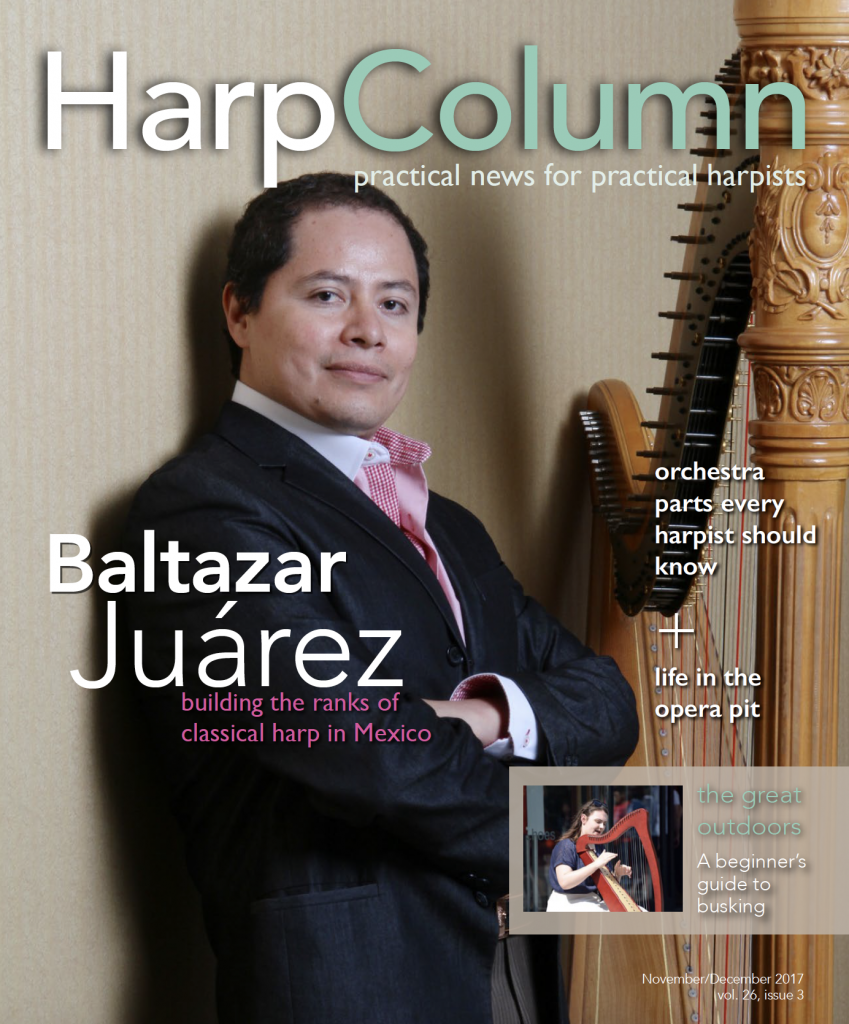
Winning a professional audition is a thrill for anyone who has ever dreamed of a career as an orchestral musician. The thrill gives way to the reality of the job’s requirements when you begin your tenure in an ensemble. Every new gig involves a learning curve, but in an opera orchestra there are a few unexpected obstacles to overcome, as I discovered when I joined the orchestra of the Lyric Opera of Chicago in 2011.
Repertoire
Musicians who dream of being in an orchestra start studying symphonic repertoire and gaining ensemble experience at a young age. Throughout college we study orchestra excerpts and maybe even get the chance to play some mock auditions. With very few exceptions, the focus throughout our studies is predominantly traditional symphonic repertoire, not opera repertoire.

The reasons for this are simple—opera literature isn’t performed as often as symphonic music, there are fewer opera companies than orchestras, and it is an incredibly expensive endeavor to produce.
Accumulating performing experience in operas can be quite difficult. When I started at the Lyric Opera, I was lucky to have already performed seven full-length operas, as well as many opera excerpts in concert, but only one of them was programmed for my first season. I had a lot of new music to learn and felt like a tsunami of scores was headed my way.
Magnitude
The average opera length is about three hours. To put that into perspective, that’s approximately the combined length of Mahler’s Symphony No. 1, Berlioz’s Symphonie Fantastique, Bartok’s Concerto for Orchestra, Strauss’ Don Juan, and Rimsky-Korsakov’s Capriccio Espagnol.
Richard Wagner’s opera Tannhaüser is 210 minutes of music, including some of the most difficult ever written for our instrument. Luckily the harp is not playing throughout the entire opera, but when it is playing, it is certainly in the spotlight. Richard Strauss’ Salome is only 100 minutes long, a rare short treat for the opera orchestra, but extremely difficult playing by everyone in the pit.
Don’t get me wrong; it’s not all long, hard slogs. There are certainly some parts whose brevity will spoil any harpist. Tchaikovsky’s Eugene Onegin includes the harp only in the first act, Donizetti’s Anna Bolena uses the harp in a single aria at the beginning of the first act, and Norma by Bellini uses the harp solely in the five-minute long overture.
Marathon training
Think about it, Die Walküre is 240 minutes of music. How in the world am I going to be alert and at my peak performance level when the dreaded “Magic Fire Music” starts 235 minutes into the performance? Mental and physical stamina are definitely important components in any opera job. For me that meant the return of the afternoon power nap, protein rich snacks throughout the night of performances, and careful consumption of caffeinated tea.
The importance of being mentally and physically well-rested becomes part of your job. How many hours of the day can you sit behind the harp and play? What kind of recovery do you need the next day? These are important questions that you have to stay ahead of to avoid overuse injuries.
During long tacets in an opera, I am able to leave the orchestra pit. I carefully use these opportunities to rest, get my blood flowing, and mentally recharge during a long-haul opera. Of course you have to pay close attention to return before your entrance and stay engaged in the performance.
Adaptability
An opera harpist wears many hats. The harp is widely used in the repertoire—much more frequently than in symphonic repertoire. The role of the harp is often as the sole accompanist to a singer (who is 50 feet away on the floor above you and acting while singing!). You quickly develop a sixth sense to accompany this person, listening carefully for them to breathe in before their next note.
Solo work is another fantastic opportunity for an opera harpist. I like to call these operas “mini concertos,” such as Rusalka by Dvorak, where you get to play a cadenza before each one of the main characters’ arias.
Juggling act
Of all the demands of opera music, I still find the most challenging part of the job to be keeping a minimum of three to four full-length operas performance ready for several months at a time. In an average work week, we perform two different operas and rehearse two others. Fairly often this happens on the same day, such as a rehearsal of Der Rosenkavalier in the morning and a performance of Lucia di Lammermoor at night. Don’t forget about learning the upcoming repertoire too!
It is a Herculean task for all of the musicians in the opera orchestra, but especially for the new members. We have to learn the repertoire as fast as we can to keep up and not be swallowed by the huge wave of music.
I love my job and often refer to it as a roller coaster. Anyone who’s ever played a Puccini score knows exactly what I mean—it feels like you’re either racing down a steep hill, climbing extremely slowly back up, or being precisely perfect in every way waiting for the next big drop. It’s definitely not for everyone, but for me and the other lucky opera harpists out there, it’s a thrill a minute—for about 180 minutes a night. •





